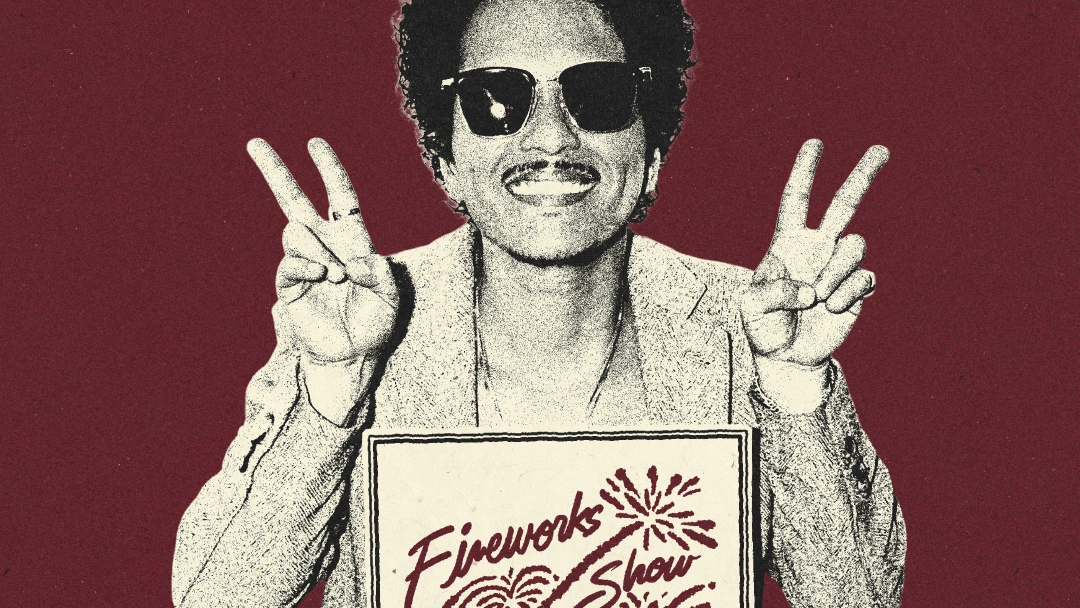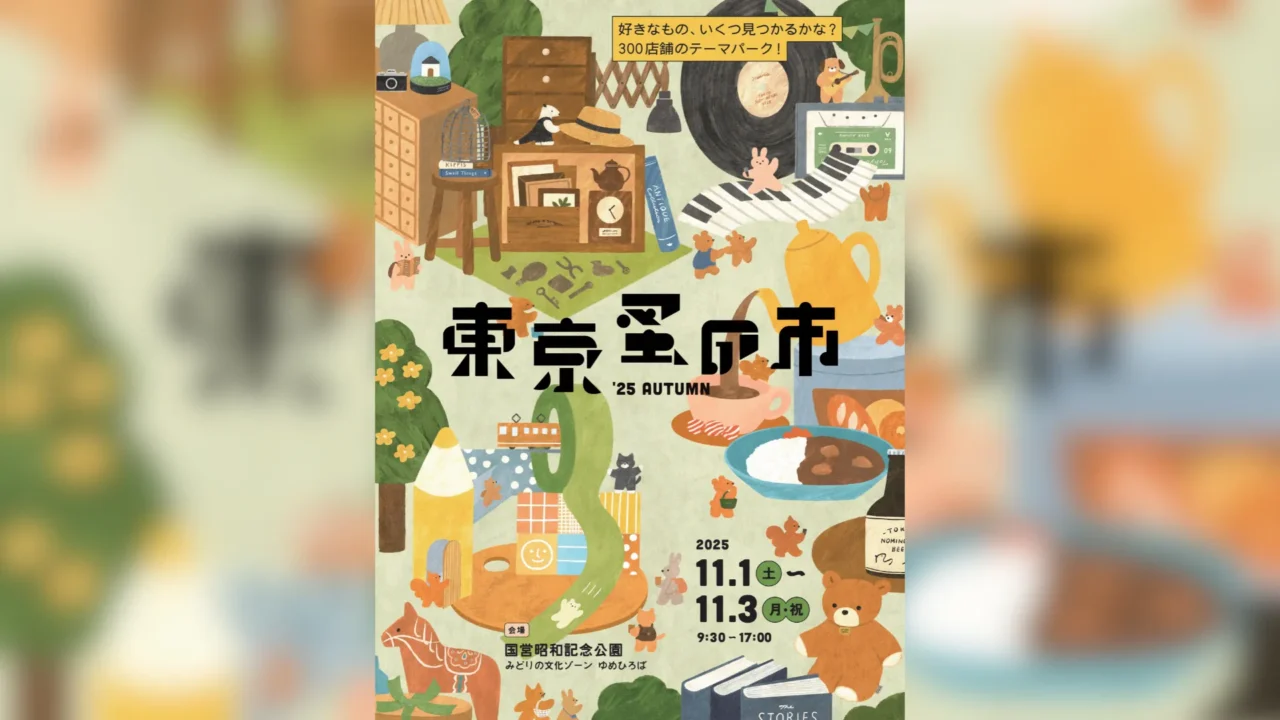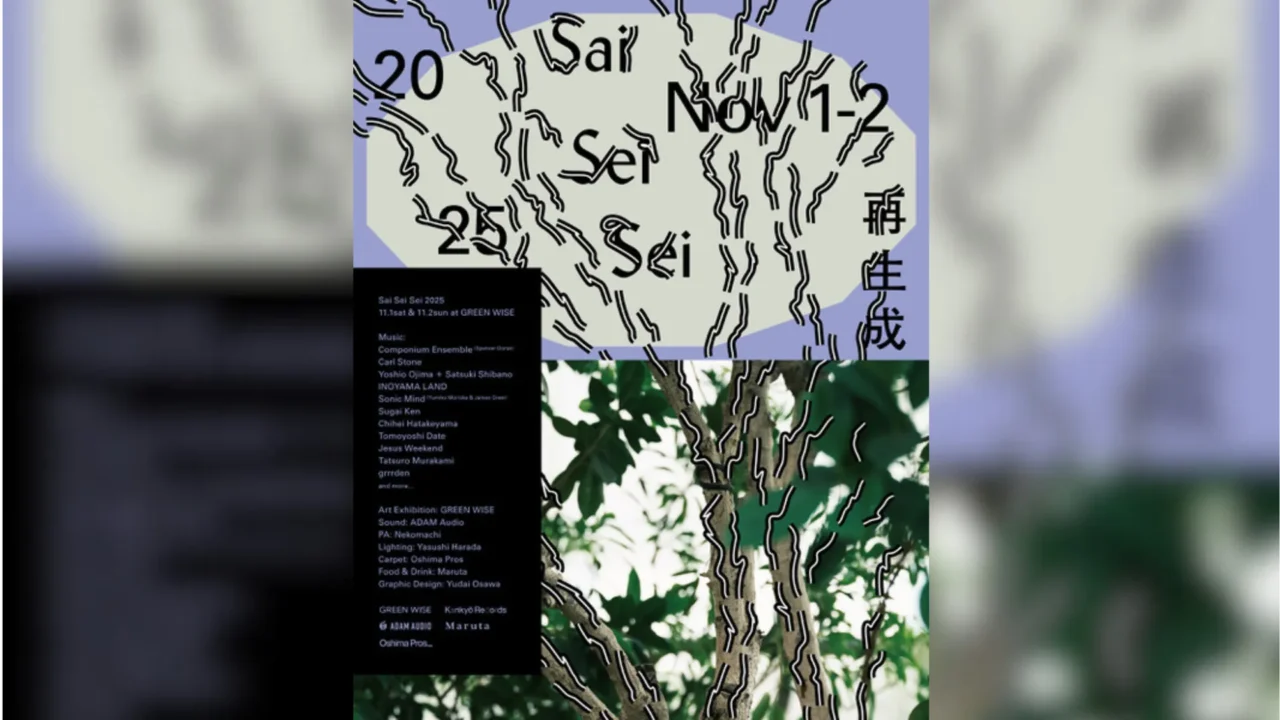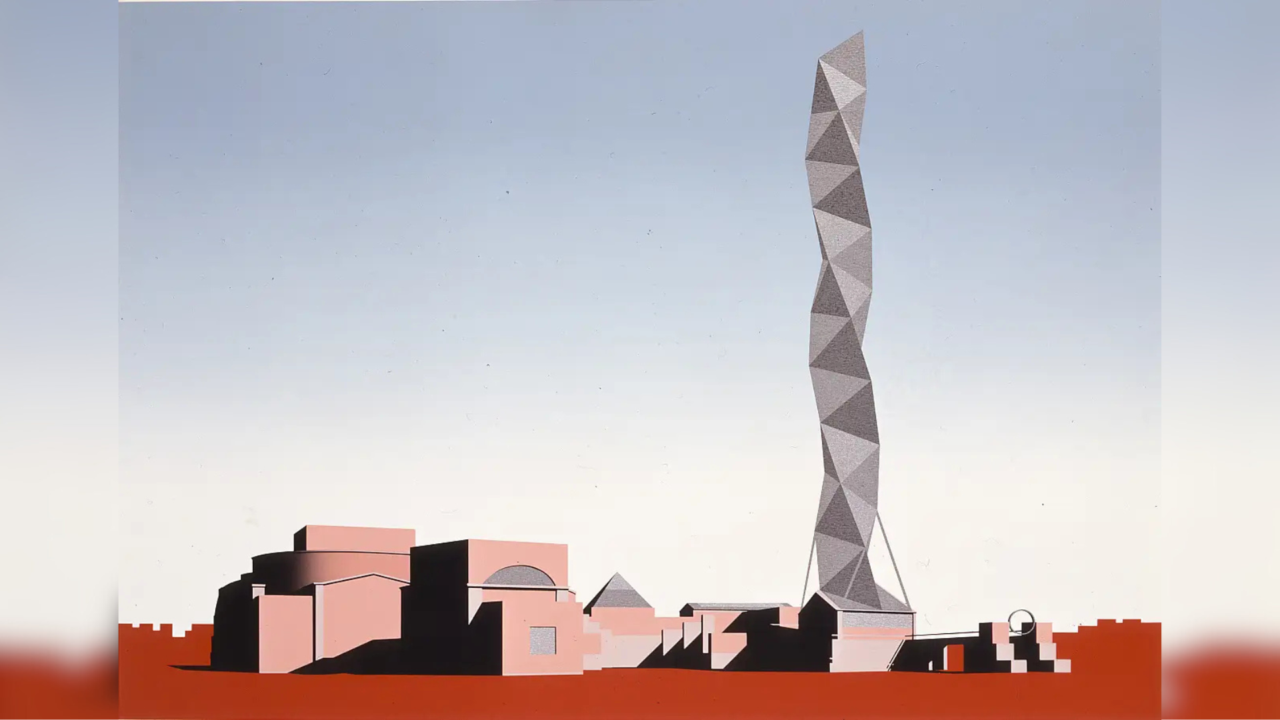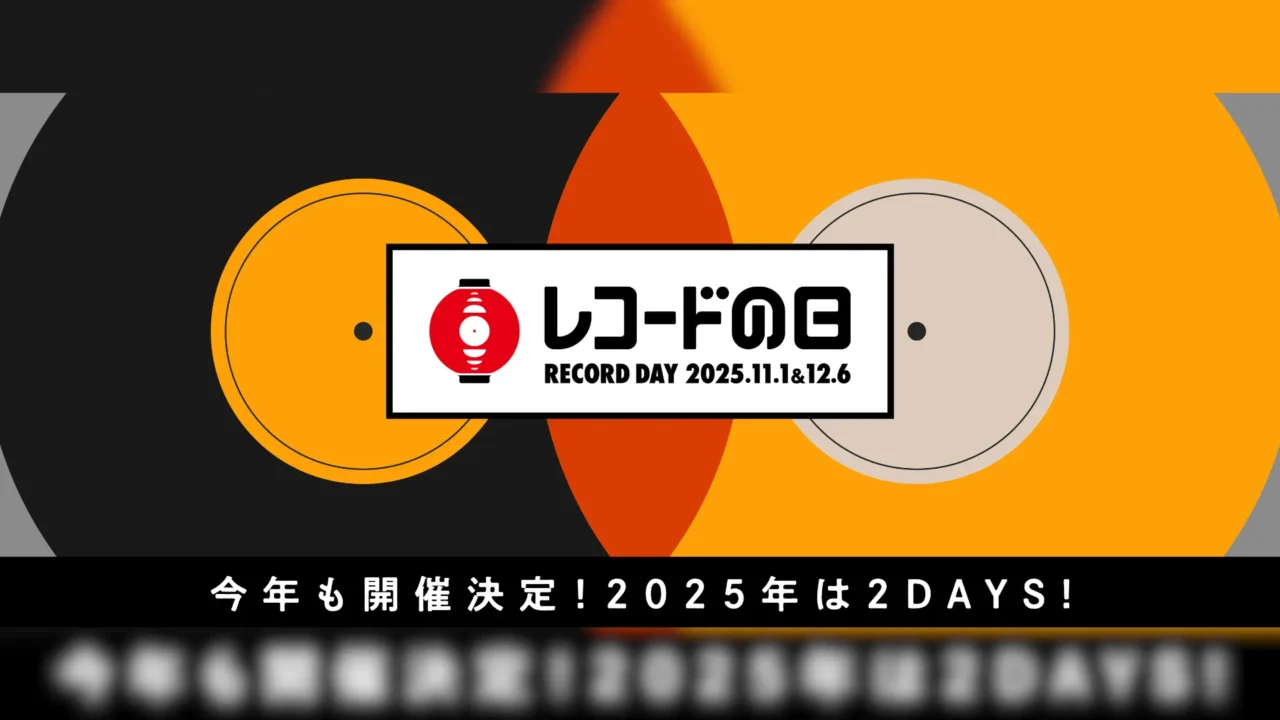INDEX
To truly empathize with others without appearing spineless, one must have a distinctive rhythm.
George Clinton
For me, the truly invaluable people are the ones who are utterly insane—those who live passionately, speak fervently, and yearn for salvation. They crave everything, never show boredom, and never utter anything mundane. They burn fiercely, like dazzling yellow fireworks, exploding and spreading like a spider weaving among the stars, glowing blue at the center, prompting everyone to exclaim, ‘Ah!’ That’s who they are.
Jack Kerouac
My First Time in Tomakomai
I just returned from my first-ever trip to Tomakomai, which was a two-day, one-night research adventure. As a proud native of Hokkaido, it’s surprising to admit that I had never set foot in Tomakomai before. While some might find that hard to believe, it’s not unusual for Hokkaido residents. Given that Hokkaido accounts for over 20% of Japan’s land area, it’s rare to find someone who has visited every nook and cranny of this vast island. Many locals have places they haven’t been to.
The regional variations in Hokkaido are astounding. For instance, if people from Sapporo spot a deer or a fox in the city, they might get a little excited, while those from Obihiro or Asahikawa might simply shrug it off. Wakkanai residents might not react at all! The differences extend to temperature, climate, and even dialects, making Hokkaido feel almost like a separate “country.” The range of these differences is remarkable, and it’s not just due to the vastness of the land; the fact that nearly everyone here is an immigrant plays a big role in that.
Anyway, this was my first-ever experience in Tomakomai, and to cut to the chase, it was an absolute blast—ridiculously fun! I often found myself wondering, “Is it really okay for this to be my job?” Each time, I happily reassured myself with, “Of course it is!” I’d like to recount the entire experience here.
I arrived at New Chitose Airport around 1 PM, and my first thought was, “What kind of research are we doing today?” I had only been informed that I would be “researching in Tomakomai,” and I had no idea what would happen after I landed. I contemplated whether I should just start enjoying some Sapporo Classic (an incredibly delicious beer exclusive to Hokkaido) when Kato-kun came to pick me up. I hopped in the car and asked, “So, what kind of research are we doing today?” Kato-kun replied, “It’s a city exploration shoot where we’ll visit my favorite spots in Tomakomai. The goal is to showcase the city’s charms.”
“So basically, it’ll end up being a drinking and walking tour?”
“Exactly!”
Sounds perfect to me

A soulful writer, tension critic, and professional playboy. His self-published magazine T.M.I., released in 2022 and 2023, achieved a historic small hit. In addition to his role as a storyteller for the R&B band Young Love, he is also active in the neo-kamishibai unit Pegasus-dan.
INDEX
Lake Utonai
The first place I visited was Lake Utunai. It is a nationally designated wildlife protection area and is registered as a Ramsar wetland, making it quite a famous lake. It was pretty large, but I heard that its depth is only about knee-high.
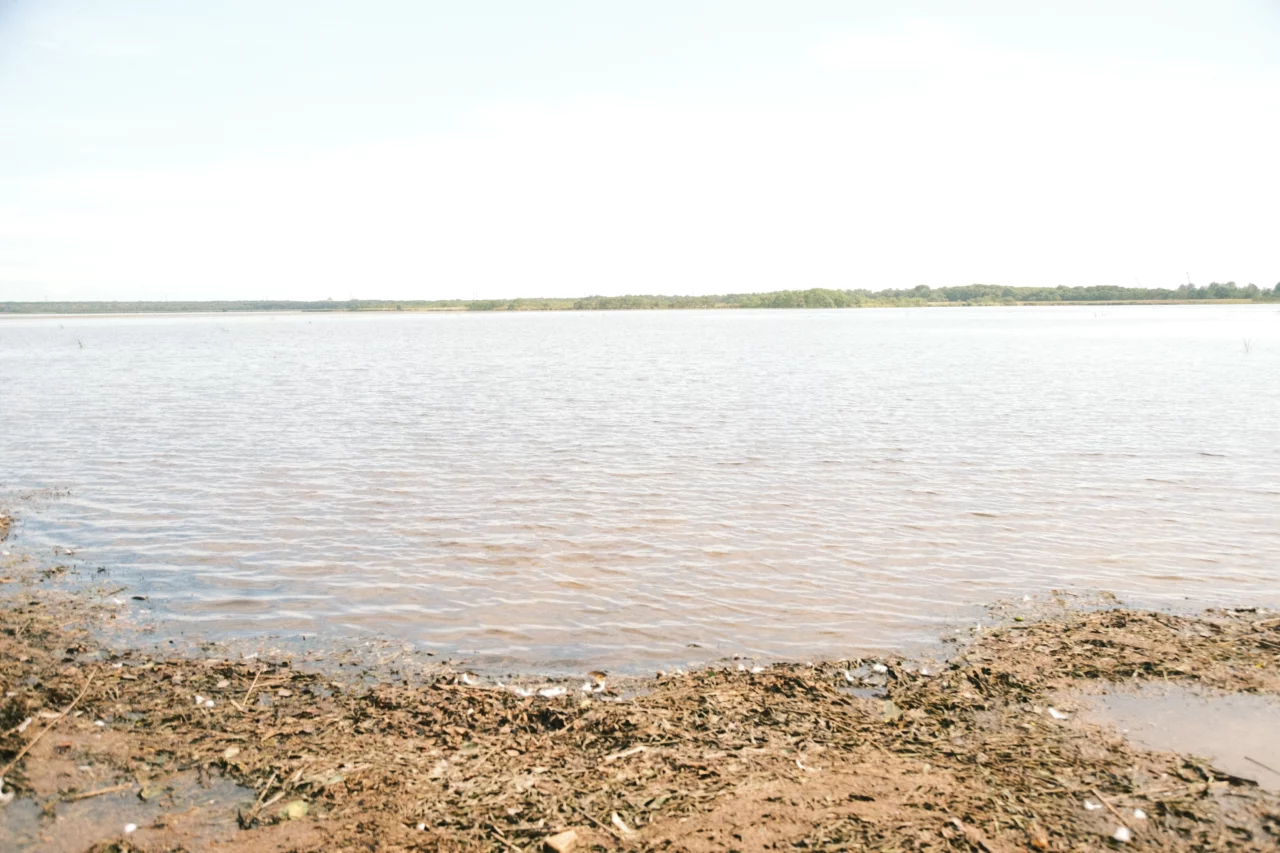
As expected from a Ramsar site, there were a ton of birds everywhere. There was even a sign warning people about the swan droppings scattered all around. While staring closely at the droppings, Kato-kun said, “Hmm, for a bird, that’s some pretty decent poop. It looks kind of human-like.” Before long, we actually encountered a swan. It seemed incredibly accustomed to humans, completely ignoring us and just munching away on the clover growing on the grass.
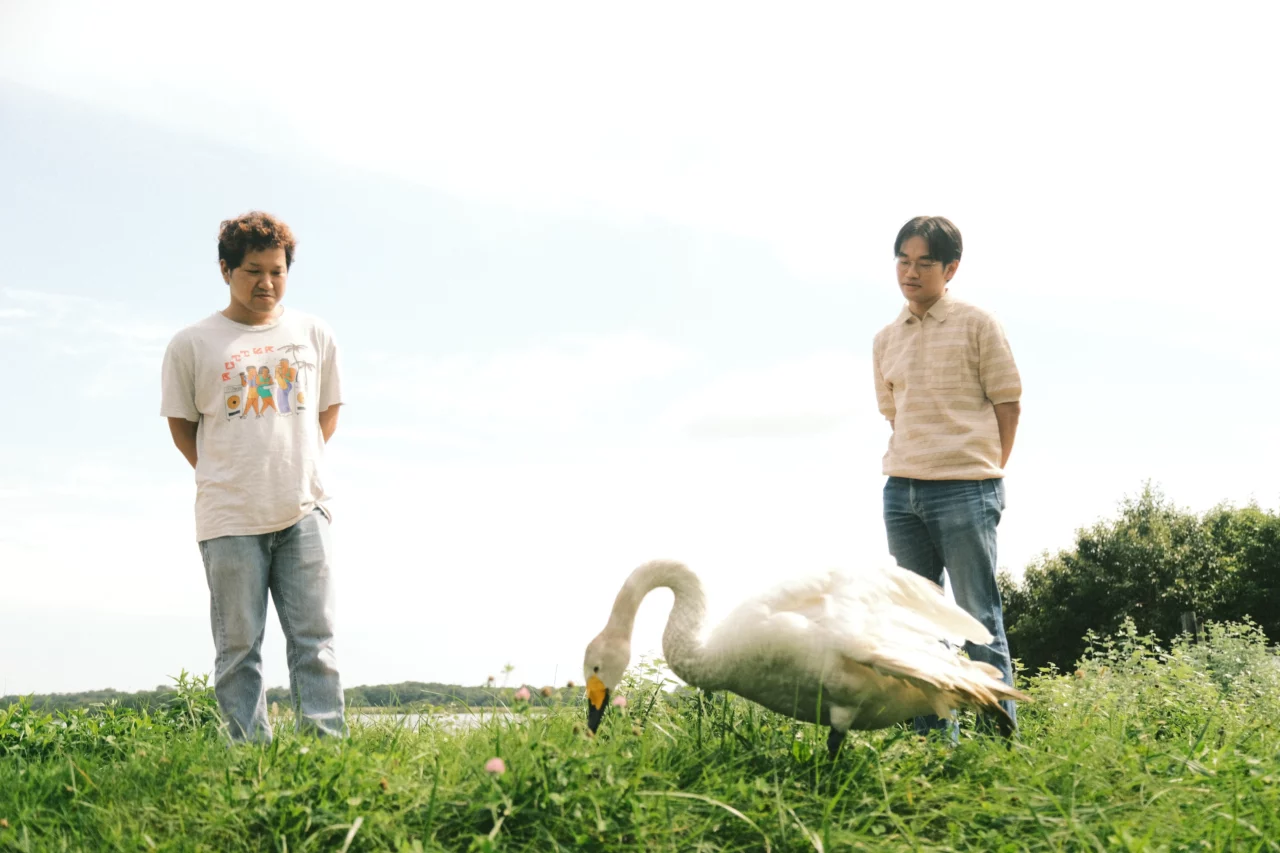
After that, we strolled around the area and chatted about various rumors, like how Tsuyoshi Nagabuchi has a training room in his studio and how Tsuyoshi Domoto reportedly places stones on top of his amplifier, before getting back into the car.
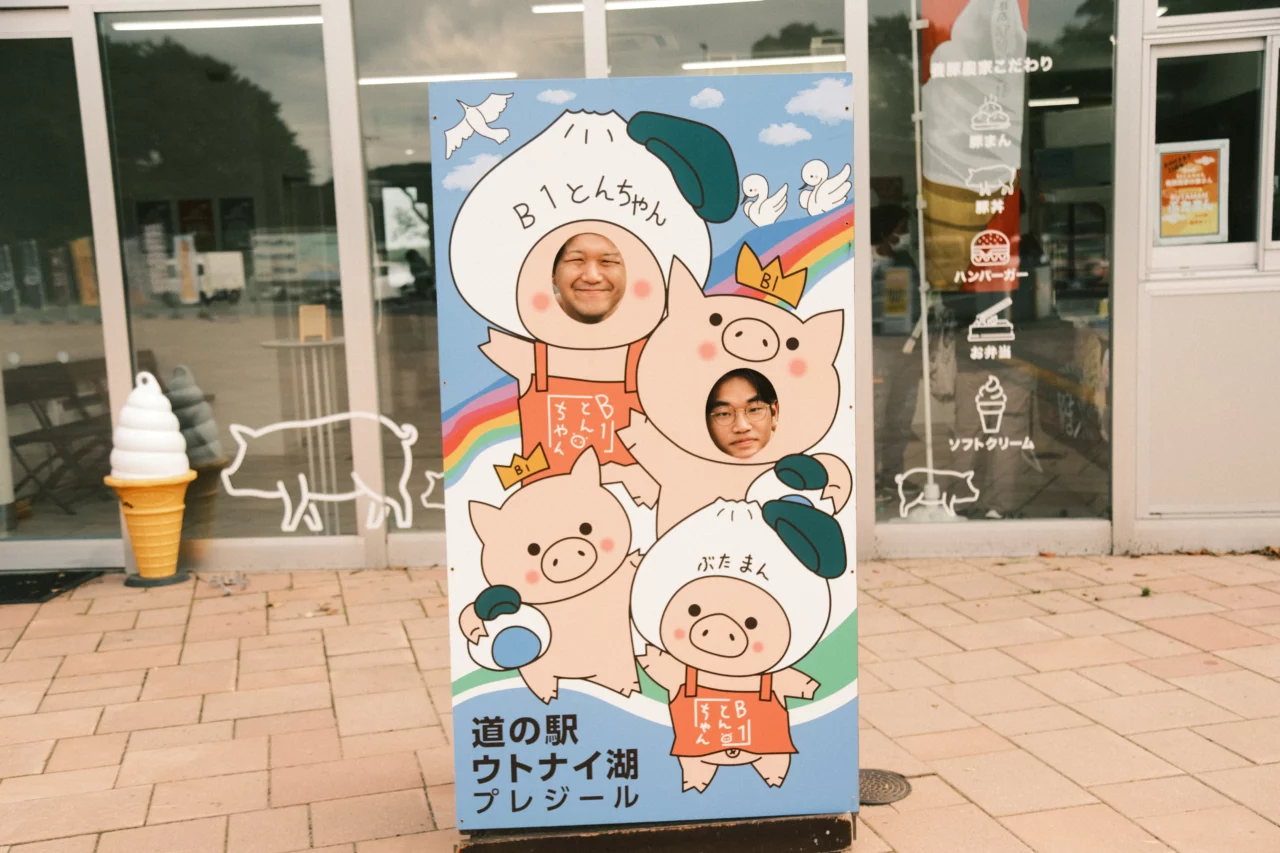
INDEX
Tomakomai Civic Hall
Our next stop was the Tomakomai Civic Hall, which serves as the venue for “FAHDAY.” Built in 1968, this storied building boasts a symmetrical design and depth, with patterns on the walls and shapes of the windows that evoke a faint sci-fi ambiance, similar to that of ‘Star Trek.’

The acoustics of the large hall, which can accommodate 1,400 people, are said to be fantastic, and it has hosted artists like Eikichi Yazawa and Tatsuro Yamashita. While I’m not familiar with Yazawa, Yamashita is known for his high standards regarding venue sound quality. The fact that he has consistently refused to perform at Budokan due to poor sound suggests that the acoustics here must be excellent. Due to aging, the hall is scheduled for demolition, making “FAHDAY” its final event. As we wandered aimlessly around the parking lot, Kato shared the backstory of how this venue was chosen for “FAHDAY” and his feelings surrounding it. His account was quite intense and complex, prompting me to exclaim “Wow” multiple times. Each time, Kato responded with a wry smile, saying, “It’s pretty crazy, isn’t it?” He added, “Having a clear enemy makes the fight worthwhile.”

NOT WONK / SADFRANK. Born in 1994 in Tomakomai City, he is a musician currently residing in the same city. In 2010, while still in high school, he formed the rock band NOT WONK. Since 2015, he has released a total of four albums through KiliKiliVilla and Avex Entertainment. He also released an album in 2022 under his solo project, SADFRANK. Kato is actively involved in art direction for many of his works.
INDEX
ELLCUBE (Live music venue)
After that, we made our way to ELLCUBE, the only live house in Tomakomai. As we arrived, we found the staff busy cleaning up after the outdoor music festival “Kassei no Hi,” which had wrapped up just the day before. They looked a bit worn out, but we managed to sneak a peek inside. The floor and stage were quite spacious, and I learned that they once accommodated 368 people during an event organized by NOT WONK. The venue had a unique charm about it, and Kato mentioned, “I believe this is the best-sounding venue in Hokkaido.”
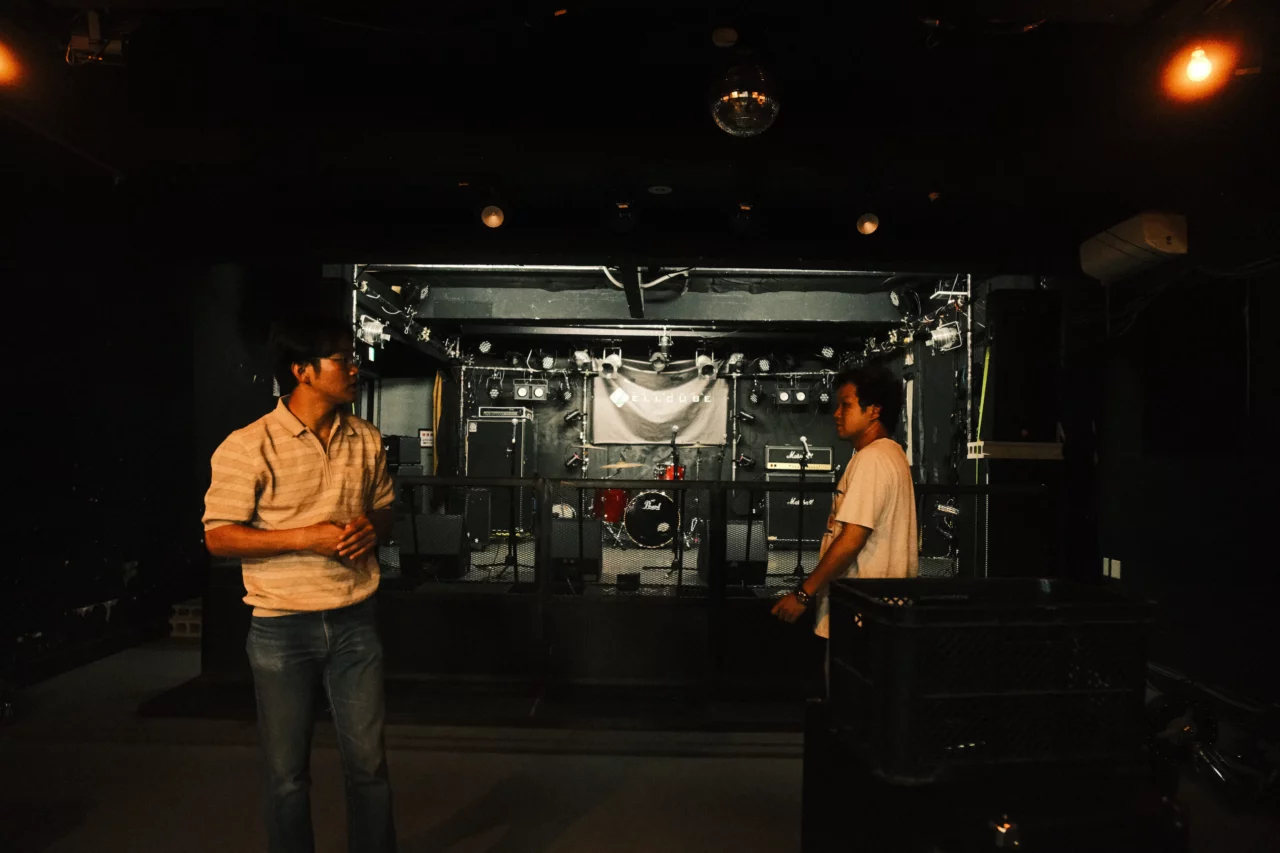

INDEX
Tomakomai Central Park
As we headed to Tomakomai Central Park, where “Kassei no Hi” was taking place, we found the cleanup operations in full swing. This festival is said to be one of the largest in Hokkaido, running for eight continuous hours over two days across four venues, and it’s completely free to attend. Last year, it attracted 18,000 visitors, which is impressive. Such numbers would be unimaginable even in a million-strong city like Sapporo. Could it be that Tomakomai has a unique environment that fosters the pursuit of independence and success in the arts?
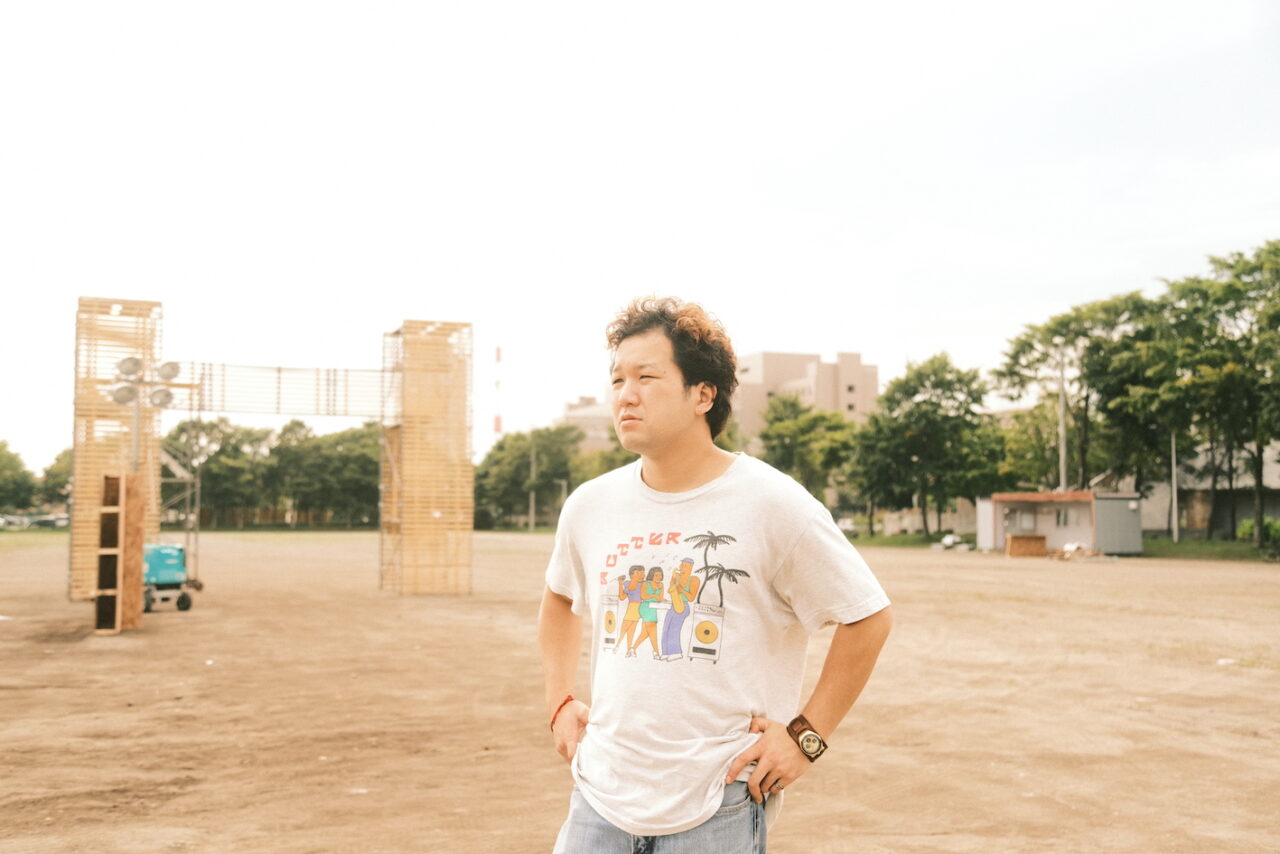


INDEX
ouchi-coffee (cafe)
It was already past 3 PM. We figured it was a good time for a coffee break, so we headed to “Ouchi Coffee,” Kato’s go-to café. As the photos show, it was a beautifully stylish space that made me say, “Wow, this place is so cool! I’m really jealous.” Kato grinned proudly and replied, “This is my favorite spot.”
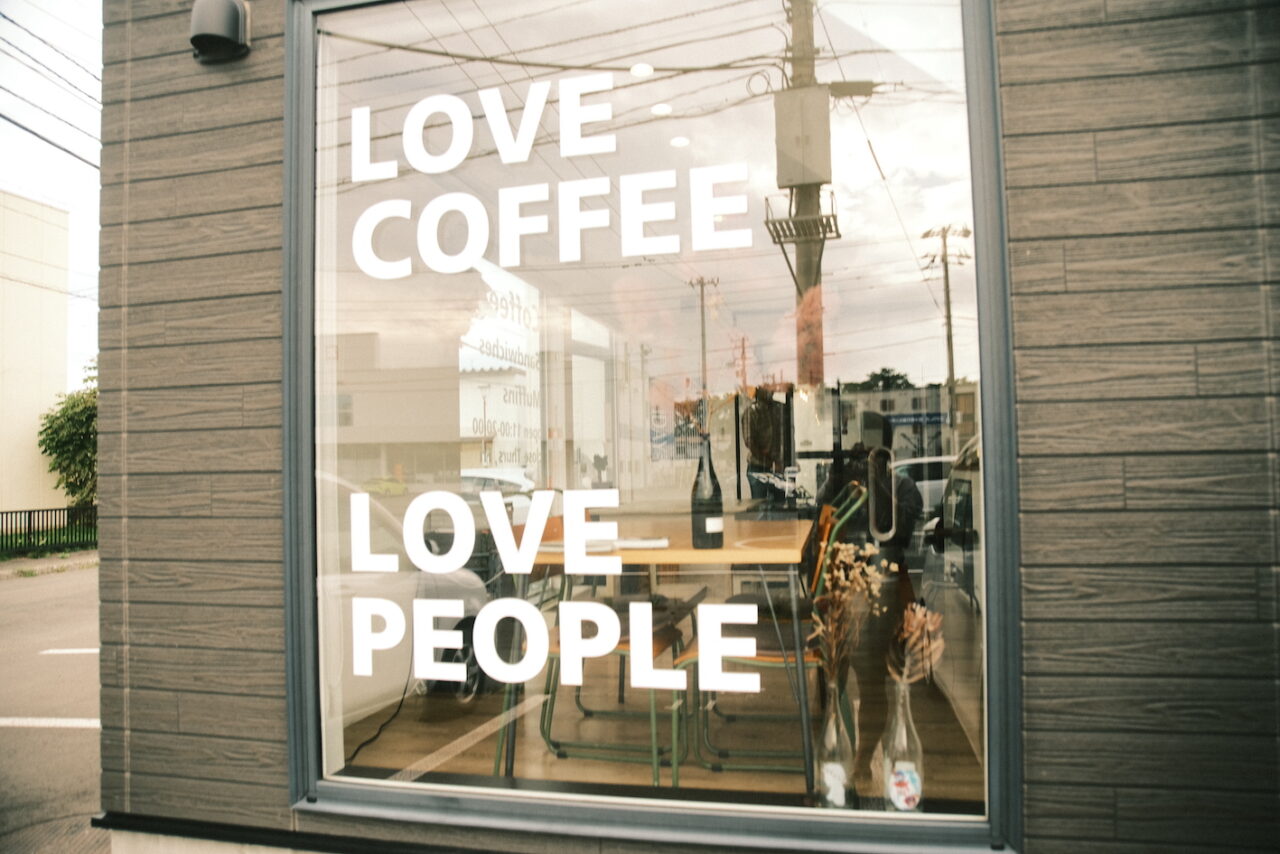
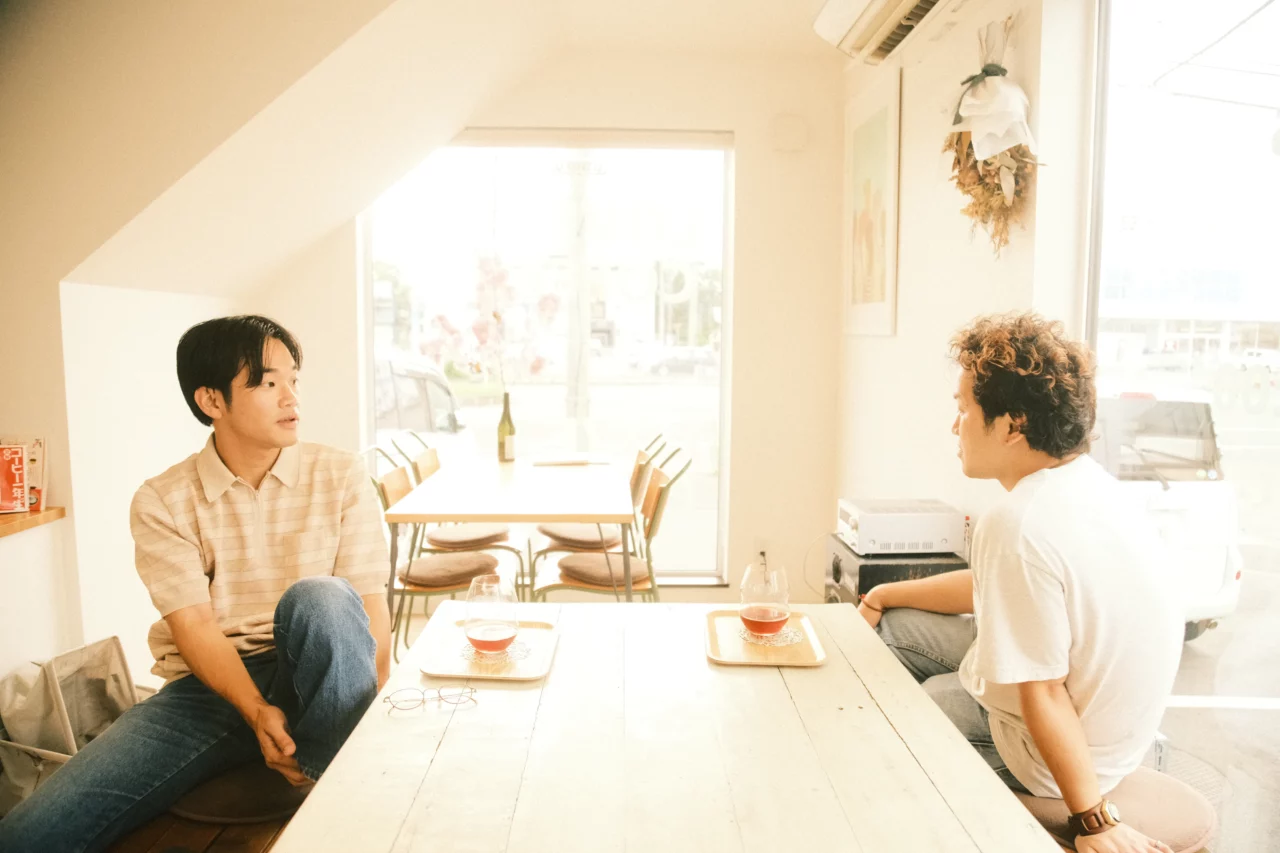
The coffee brewed by the owner, Reimi, was absolutely delicious. The Salvadoran coffee had a rich, wine-like flavor, while the Colombian red plum coffee offered a vibrant taste reminiscent of tropical fruit tea. At Ouchi Coffee, there were notes detailing the characteristics of each coffee posted on the counter. One note read, “It’s the long-awaited roast from Leaves Coffee! It’s amazing! The volume is impressive right from the start. There’s so much information to take in. The aroma, flavor, texture, and colors all come rushing in, and the aftertaste is incredibly strong!”
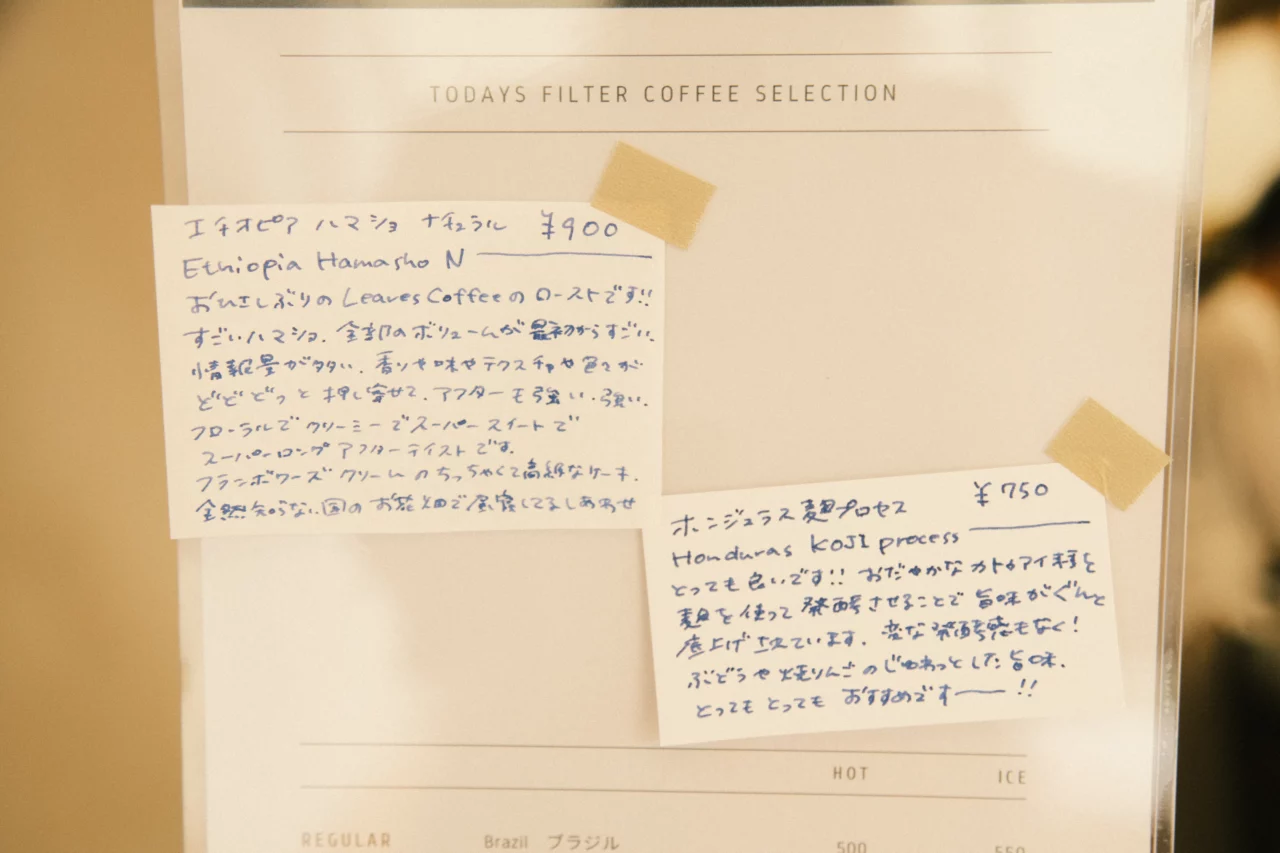
As I listened intently, Reimi smiled and shared her thoughts.
“Describing flavors can be quite tricky. I want to convey specifics, like ‘it’s fruity, and the aroma is this,’ but when I try, I feel like I’m drifting further away from the actual taste. I once wrote about the ‘taste of a car driven by a girl.’”
“Oh, I can sort of picture that. Like a black BB parked outside a late-night Don Quijote, with a marijuana-shaped air freshener hanging from the rearview mirror.”
“I thought it was a decent description, but my friends reacted with, ‘What does that even mean!?’”
“Using imagery is a handy way to communicate, but you really have to trust the recipient’s senses for it to resonate, right?”



















